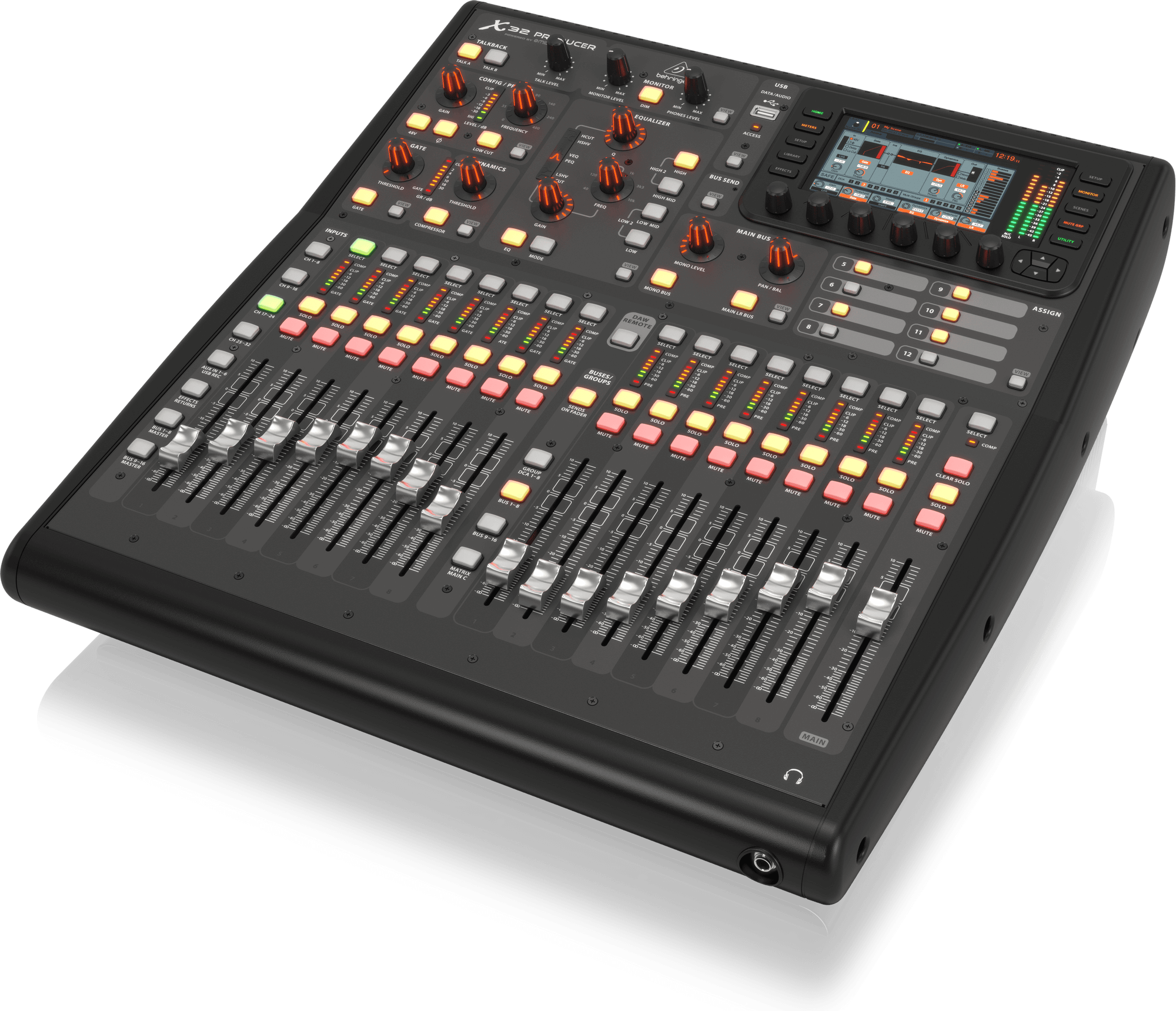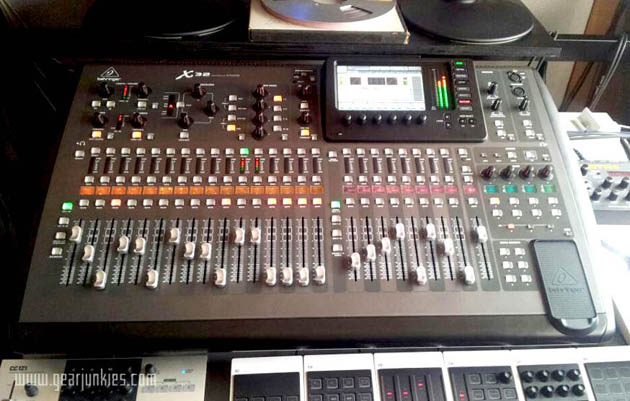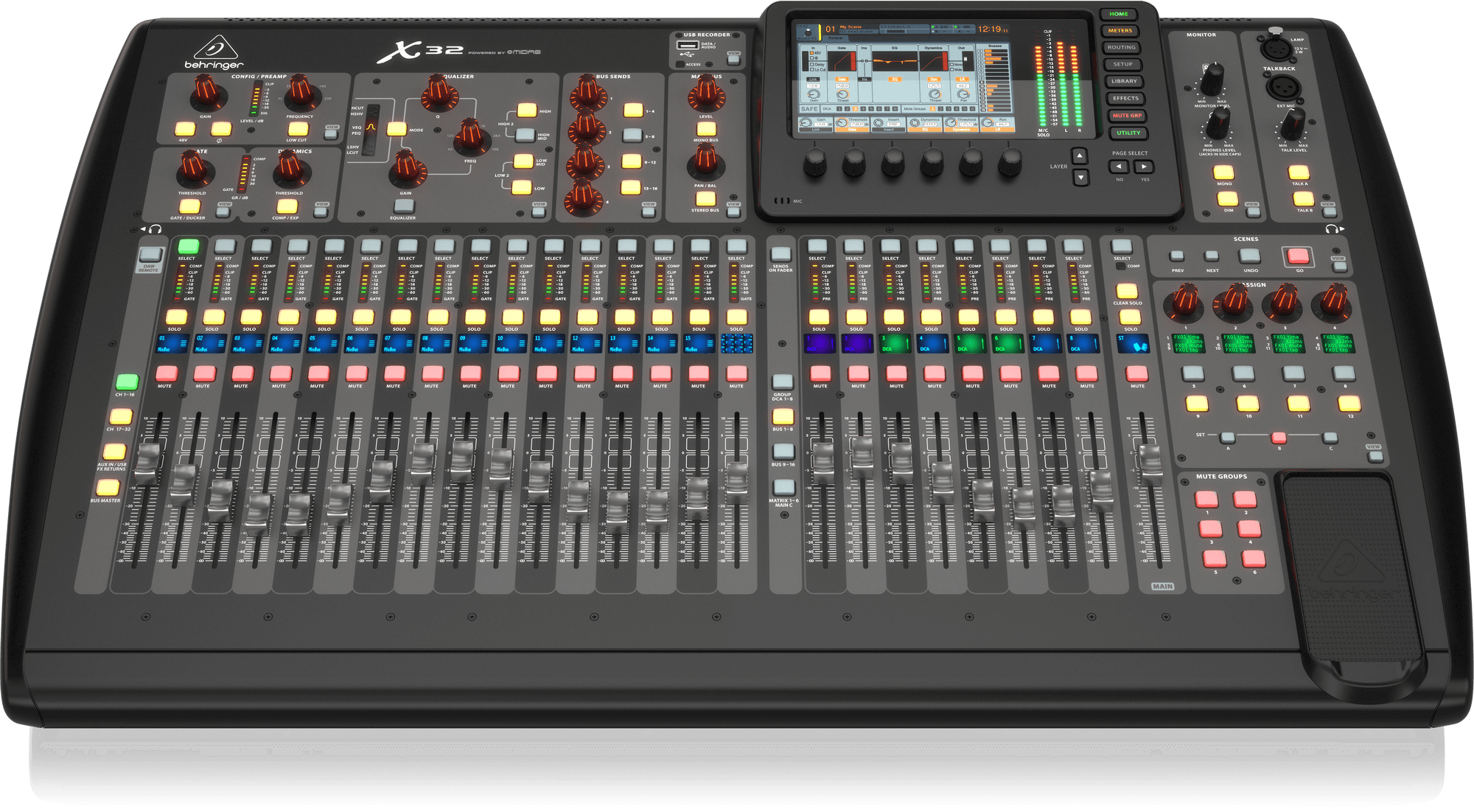
The Bus Sends control the channel level sent to their respective busses. Rotate ENCODER 6 or press the LAYER buttons to alternate between the 4 fully adjustable frequency bands.Press EQUALIZER or ENCODER 6 to enable the equalizer.Enable the equalizer to shape a signal’s low, middle, and high frequency content. Press ENCODER 2 to change between compressor and expander modes.Īn equalizer, or EQ, is used to change the volume level of certain frequency bands.Press COMP/EXP or ENCODER 1 to turn on the DYNAMICS.Set a high ratio like 10:1 to use the compressor as a limiter. Adjust the ratio and threshold settings to change how the signal’s dynamics are smoothed out. Use ENCODER 5 to enable optional insert effects (see EFFECTS menu).Ī compressor reduces and smoothes out the signal’s amplitude (aka volume or dynamics).Rotate ENCODER 2 to change between the alternate expander and ducker modes.Press GATE/DUCKER or ENCODER 1 to turn on the GATE.Gates are used to automatically silence the channel when its level does not exceed the threshold. Press the LAYER buttons to change which settings the encoders control.Ī gate is an expander with a fixed, infinite ratio.Turn on phantom power for condenser microphones or active DI boxes by pressing the 48V button.Increase the gain so that the signal is as loud as possible without distorting (red LED meters).Speak into the microphone and turn up GAIN or ENCODER 1.See the sub-menus for specific channel strip functions by pressing their respective VIEW button or browsing with the PAGE SELECT buttons.Use the encoders to adjust the channel settings and press the LAYER buttons to change which settings the encoders control.Press the HOME button to see the channel strip starting with the CONFIG/PREAMP page.Connect a microphone to IN 1 and press the SELECT button on channel 1.Press the channel’s select button to control its channel strip settings.

The input signal will show up on the channel it’s connected to. The local (built-in) inputs will be selected by default, but you can always change them to digital snake inputs from the ROUTING menu.

Input signal and channel strip settingsĬonnecting a microphone and getting input signal is pretty simple. Once done you can route the signal to either the main speakers or a stage monitor.

To get started, let’s connect a mic and process the signal with the X32’s channel strip. Each channel may be unique, so that means a lot of things can happen at once. Managing your signals on the X32 involves routing and processing.
#Behringer x32 driver for mac generator#
#Behringer x32 driver for mac how to#
We’ll show you how to get sound out, create a monitor mix, record on a computer, and much more. In this guide, we will show you how to get started using some of the X32’s features.


 0 kommentar(er)
0 kommentar(er)
